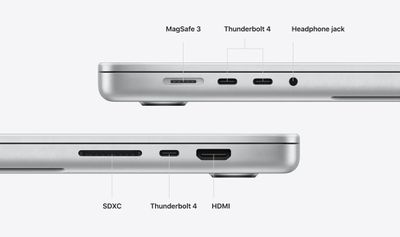
- #MACBOOK PRO SD CARD READER SLOT FOR MAC#
- #MACBOOK PRO SD CARD READER SLOT MAC OS#
- #MACBOOK PRO SD CARD READER SLOT INSTALL#
- #MACBOOK PRO SD CARD READER SLOT DRIVERS#
SD means Secure Digital which is a non-volatile flash memory card. SD cards MTBF are low, not designed for HEAVY sustained accessĪpple Secure Digital Card Specs : SD vs SDHC Even a fast SDHC has slower transfer rates than most hard drives Slower SDHC cards aren't really fast compared to SSD drives Your Mac's built-in card reader might be too slow Data transfer rates remain mostly constant Fast Class 6 and higher SDHC cards have rapid data access times Compact and removable: you can take important applications with you SDHC cards offer cheap storage without the need to open up your laptop
#MACBOOK PRO SD CARD READER SLOT INSTALL#
Once the install completes, to boot OSX off the SDHC card: Restart and hold down the OPTION key to select the icon for the card as the startup volume.
#MACBOOK PRO SD CARD READER SLOT DRIVERS#
You may opt to do a custom OSX install to minimize Printer Drivers and if installing iLife: Omit GarageBand - it's audio files add several Gigs to an OSX install. Leopard needs about 8-12GB depending on Install options chosen. Ideally you need a 32GB SDHC or larger card for both the speed and capacity you'll need to install OSX.
#MACBOOK PRO SD CARD READER SLOT MAC OS#
On Intel based Macs you MUST set the partition table type to GUID, and format the card to use the Mac OS Extended format.

When using SD - SDHC flash memory card exclusively for fast Mac backup, optimal Mac to Mac file transfers, or for creating a bootable OSX Tiger, Leopard or Lion, Mavericks or Yosemite Secure Digital startup disk for diagnostic uses, it's important to re-format the card using Apple's Disk Utility. However most consumer products will expect the default MBR partitioning and FAT16/FAT32 filesystem. Under MS-Windows and some Unix systems, SD cards can be formatted using the NTFS - and on later versions - exFAT file system. Under Apple's Mac OS X, SD cards can be partitioned as GUID devices and formatted with the HFS+ file system. As such, other partition schemes than MBR partitioning and DOS/Windows FAT file systems can be used. SD cards are plain block storage devices and don't imply any specific partition type or file system. Kingston maintains a great chart identifying the different terms and icons used to identify SD class and speeds - and which devices/needs each type of card is best suited for. See this article at Apple's website for a very good overview of Secure Digital card use on the iMac and MacBook Pro: About the Apple SD Card Slot FAQ. They figure those who need one have plenty of external USB readers and even Thunderbolt devices, docks and hubs with flash memory card slots they can purchase if needed. More recently though, Apple has largely phased-out built-in SD card readers. Mac mini (Mid 2010) features a rear SDXC slot, backward compatible with SD-SDHC cards.
#MACBOOK PRO SD CARD READER SLOT FOR MAC#
Here are some of the fastest SD cards for Mac currently available:īeginning in 2009 Apple added a high-speed SD-SDHC slot to these Macintosh computers: Class 10 SD cards have the highest performance. The slot on Macs accept cards that are either Standard SD (Secure Digital) up to 4 GB, SDHC (Secure Digital High Capacity) 4 GB to 32 GB, and SDXC (Secure Digital eXtended Capacity) cards in 32, 64, or 128 GB sizes. Some connect internally via USB, others interface directly with the PCI bus for faster performance. Combining both speed AND high capacity - those owning select models of Mac mini, Apple MacBook Pro and Air, as well as Aluminum iMac models may have a built-in SD memory card slot reader.


 0 kommentar(er)
0 kommentar(er)
